Abstract
During a 15-month period, 27 patients were seen in a routine clinical pulmonary function laboratory in whom the transfer coefficient (TLCO/VA or KCO), measured by the single breath technique, was increased. Pulmonary haemorrhage accounted for two-thirds of the cases; in them sequential measurements of KCO were able to monitor the onset and cessation of bleeding. In the remaining cases the cause of the increase in KCO remains uncertain. All patients had a reduction in vital capacity. Experiments in six normal subjects showed that KCO rose as the breath-holding lung volume was reduced, but that this was insufficient to account for the raised KCO in patients with reduced volumes. Partitioning of the two components of TLCO at different lung volumes in three normal subjects showed that an increase in pulmonary capillary blood volume per unit alveolar volume was chiefly responsible for the increase of KCO in normal subjects at lower lung volumes. The membrane diffusing capacity changed less than predicted per unit volume, suggesting that the thickness of the air-blood barrier remains fairly constant as the lung expands or contracts.
Full text
PDF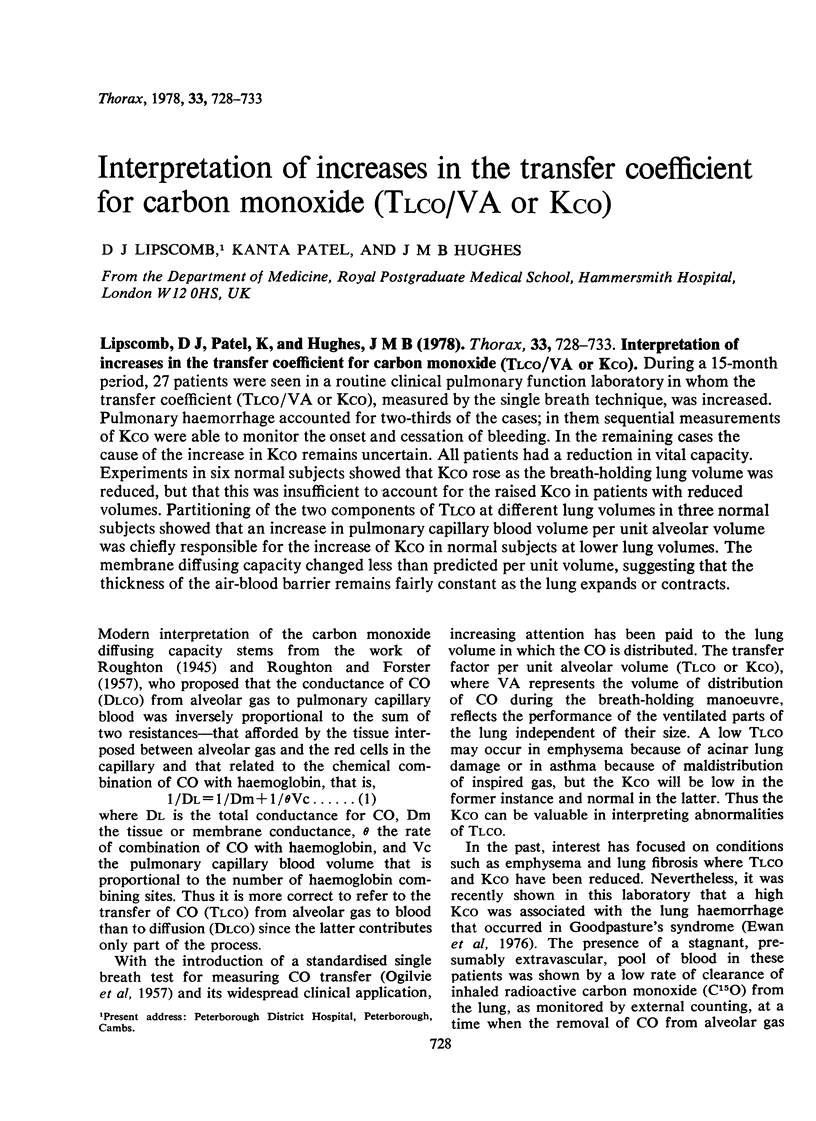
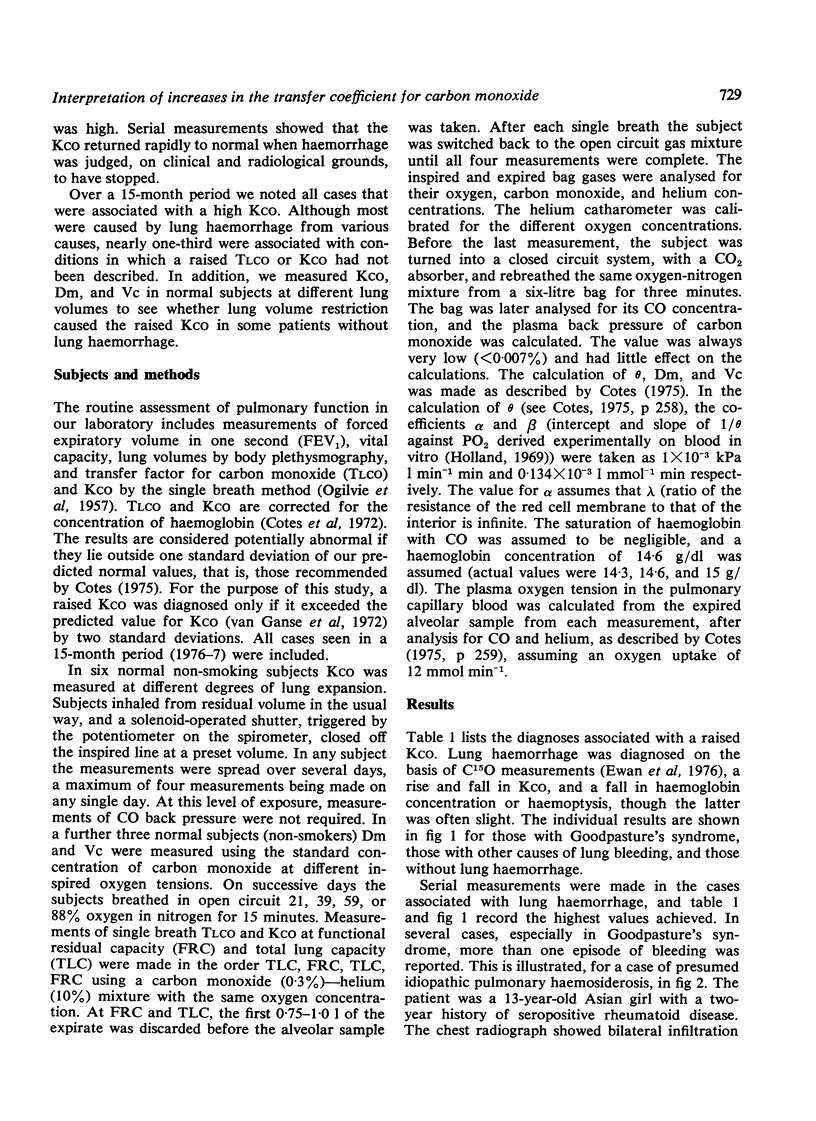
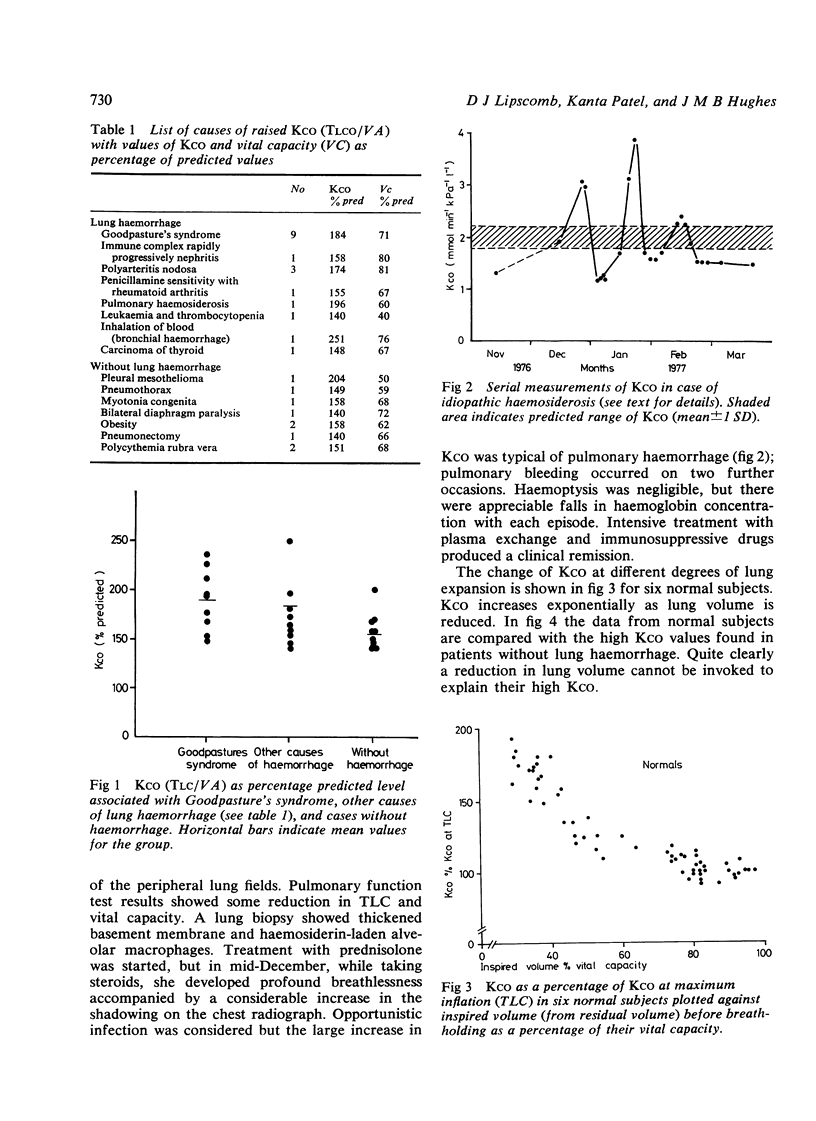
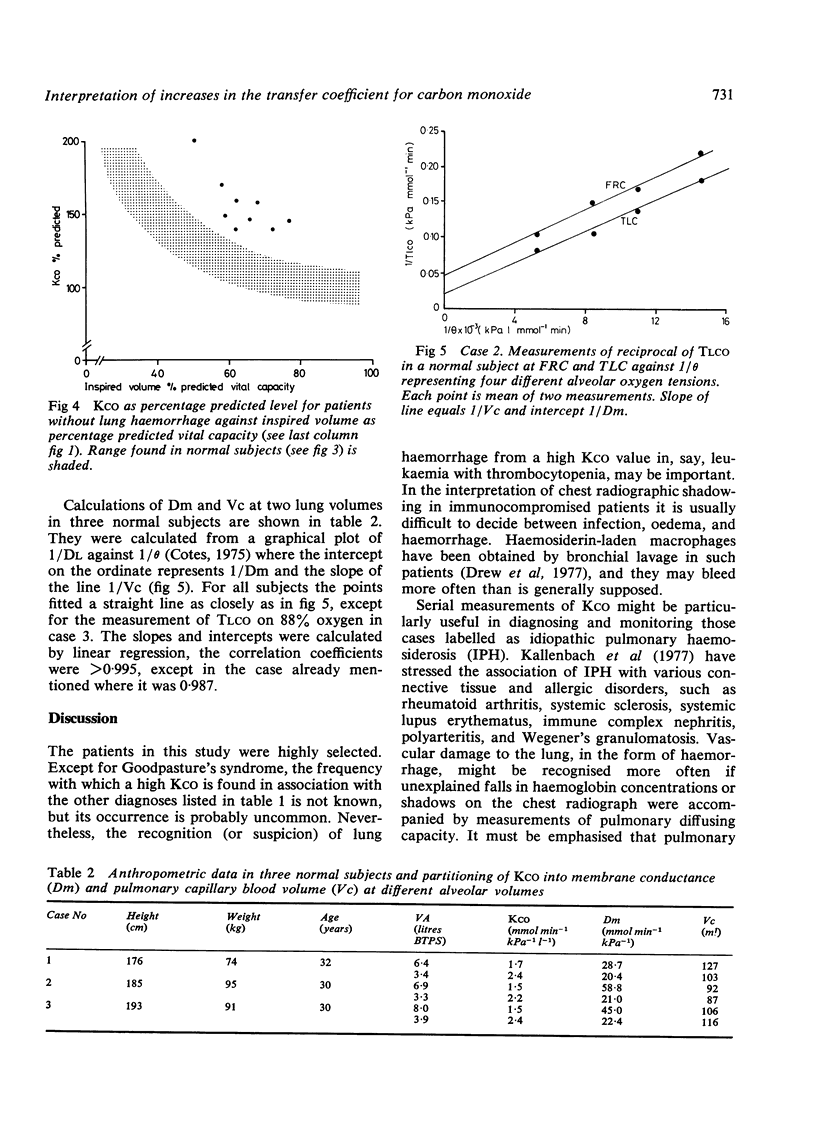
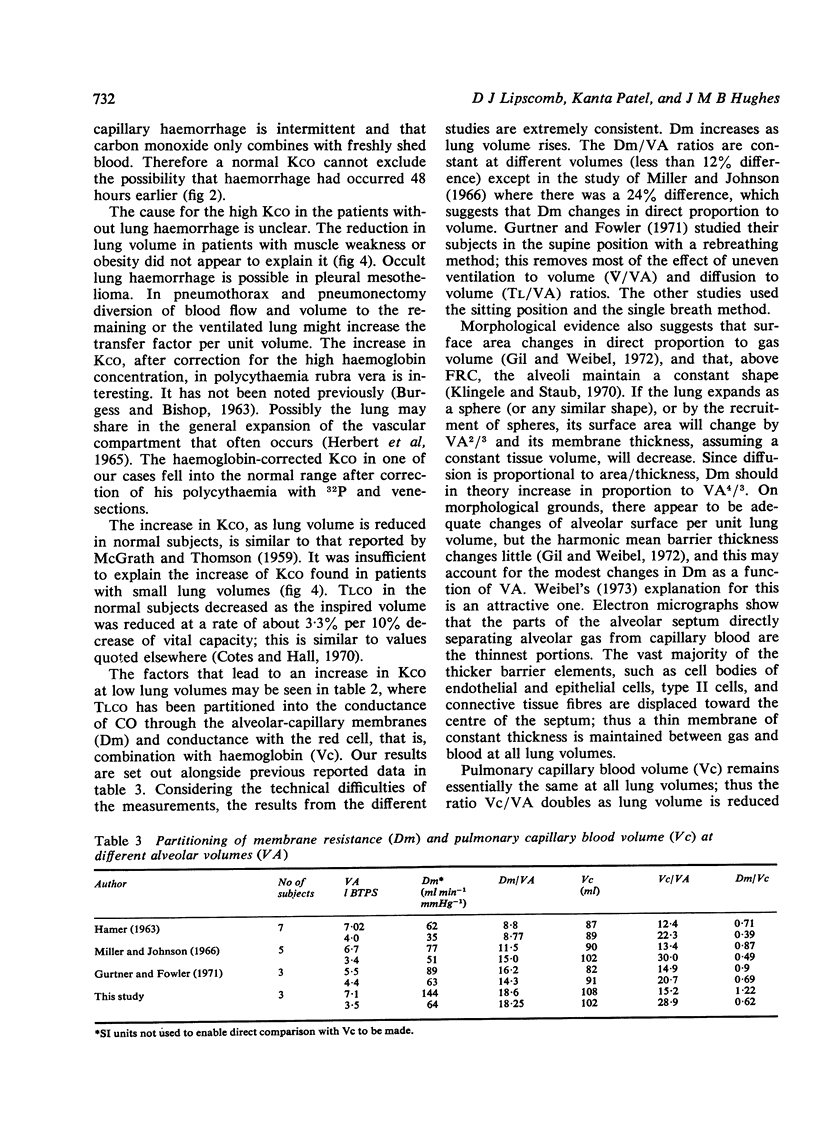
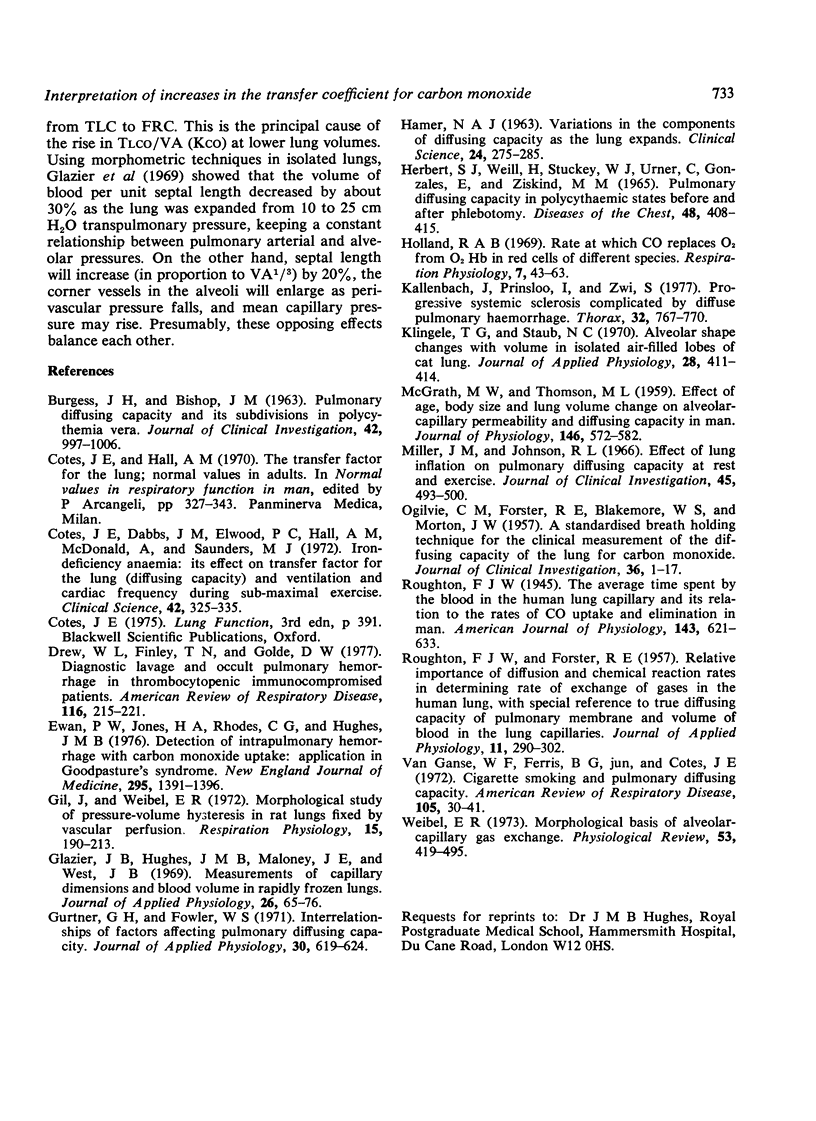
Selected References
These references are in PubMed. This may not be the complete list of references from this article.
- BLAKEMORE W. S., FORSTER R. E., MORTON J. W., OGILVIE C. M. A standardized breath holding technique for the clinical measurement of the diffusing capacity of the lung for carbon monoxide. J Clin Invest. 1957 Jan;36(1 Pt 1):1–17. doi: 10.1172/JCI103402. [DOI] [PMC free article] [PubMed] [Google Scholar]
- BURGESS J. H., BISHOP J. M. Pulmonary diffusing capacity and its subdivisions in polycythemia vera. J Clin Invest. 1963 Jul;42:997–1006. doi: 10.1172/JCI104804. [DOI] [PMC free article] [PubMed] [Google Scholar]
- Cotes J. E., Dabbs J. M., Elwood P. C., Hall A. M., McDonald A., Saunders M. J. Iron-deficiency anaemia: its effect on transfer factor for the lung (diffusiong capacity) and ventilation and cardiac frequency during sub-maximal exercise. Clin Sci. 1972 Mar;42(3):325–335. doi: 10.1042/cs0420325. [DOI] [PubMed] [Google Scholar]
- Drew W. L., Finley T. N., Golde D. W. Diagnostic lavage and occult pulmonary hemorrhage in thrombocytopenic immunocompromised patients. Am Rev Respir Dis. 1977 Aug;116(2):215–221. doi: 10.1164/arrd.1977.116.2.215. [DOI] [PubMed] [Google Scholar]
- Ewan P. W., Jones H. A., Rhodes C. G., Hughes J. M. Detection of intrapulmonary hemorrhage with carbon monoxide uptake. Application in goodpasture's syndrome. N Engl J Med. 1976 Dec 16;295(25):1391–1396. doi: 10.1056/NEJM197612162952502. [DOI] [PubMed] [Google Scholar]
- Gil J., Weibel E. R. Morphological study of pressure-volume hysteresis in rat lungs fixed by vascular perfusion. Respir Physiol. 1972 Jun;15(2):190–213. doi: 10.1016/0034-5687(72)90098-9. [DOI] [PubMed] [Google Scholar]
- Glazier J. B., Hughes J. M., Maloney J. E., West J. B. Measurements of capillary dimensions and blood volume in rapidly frozen lungs. J Appl Physiol. 1969 Jan;26(1):65–76. doi: 10.1152/jappl.1969.26.1.65. [DOI] [PubMed] [Google Scholar]
- Gurtner G. H., Fowler W. S. Interrelationships of factors affecting pulmonary diffusing capacity. J Appl Physiol. 1971 May;30(5):619–624. doi: 10.1152/jappl.1971.30.5.619. [DOI] [PubMed] [Google Scholar]
- HAMER N. A. Variations in the components of the diffusing capacity as the lung expands. Clin Sci. 1963 Apr;24:275–285. [PubMed] [Google Scholar]
- Herbert S. J., Weill H., Stuckey W. J., Urner C., Gonzales E., Ziskind M. M. Pulmonary diffusing capacity in polycythemic states before and after phlebotomy. Dis Chest. 1965 Oct;48(4):408–415. doi: 10.1378/chest.48.4.408. [DOI] [PubMed] [Google Scholar]
- Holland R. A. Rate at which CO replaces O2 from O2Hb in red cells of different species. Respir Physiol. 1969 Jun;7(1):43–63. doi: 10.1016/0034-5687(69)90068-1. [DOI] [PubMed] [Google Scholar]
- Kallenbach J., Prinsloo I., Zwi S. Progressive systemic sclerosis complicated by diffuse pulmonary haemorrhage. Thorax. 1977 Dec;32(6):767–770. doi: 10.1136/thx.32.6.767. [DOI] [PMC free article] [PubMed] [Google Scholar]
- Klingele T. G., Staub N. C. Alveolar shape changes with volume in isolated, air-filled lobes of cat lung. J Appl Physiol. 1970 Apr;28(4):411–414. doi: 10.1152/jappl.1970.28.4.411. [DOI] [PubMed] [Google Scholar]
- McGRATH M. W., THOMSON M. L. The effect of age, body size and lung volume change on alveolar-capillary permeability and diffusing capacity in man. J Physiol. 1959 Jun 11;146(3):572–582. doi: 10.1113/jphysiol.1959.sp006212. [DOI] [PMC free article] [PubMed] [Google Scholar]
- Miller J. M., Johnson R. L., Jr Effect of lung inflation on pulmonary diffusing capacity at rest and exercise. J Clin Invest. 1966 Apr;45(4):493–500. doi: 10.1172/JCI105363. [DOI] [PMC free article] [PubMed] [Google Scholar]
- ROUGHTON F. J., FORSTER R. E. Relative importance of diffusion and chemical reaction rates in determining rate of exchange of gases in the human lung, with special reference to true diffusing capacity of pulmonary membrane and volume of blood in the lung capillaries. J Appl Physiol. 1957 Sep;11(2):290–302. doi: 10.1152/jappl.1957.11.2.290. [DOI] [PubMed] [Google Scholar]
- Van Ganse W. F., Ferris B. G., Jr, Cotes J. E. Cigarette smoking and pulmonary diffusing capacity. (Transfer factor). Am Rev Respir Dis. 1972 Jan;105(1):30–41. doi: 10.1164/arrd.1972.105.1.30. [DOI] [PubMed] [Google Scholar]


